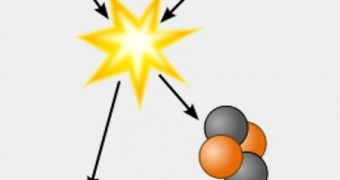While a temperature of about 35,000 degrees Fahrenheit may seem a bit hot to most of us, physicists would consider it just warm. Within it, they say, resides warm dense matter, a type of matter that has been brought up to a high temperature, but not high enough to start undergoing nuclear fusion. One place where this matter could be found is at the core of Jupiter, which has 300 times the mass of the Earth. It may also be found in the preliminary stages of nuclear fusion, such as, for instance, in the early stages of a protostar, R&D reports.
Engineers and physicists from the Lawrence Berkeley National Laboratory (Berkeley Lab) and the Princeton University, in the US, are currently constructing a new particle accelerator, which they hope will provide them with the means necessary to study warm dense matter. In charge of building the specialized user facility is the Berkeley Lab Accelerator and Fusion Research Division (AFRD).
“Most accelerators are built to boost relatively small bunches of particles to very high energies. To study warm dense matter, we need a different kind of accelerator, one that can deliver very high currents – a great many particles – in short pulses of moderate energy,” AFRD scientist Joe Kwan explains. He is also a project manager for the Neutralized Drift Compression Experiment-II (NDCX II), a project of the Heavy Ion Fusion Science Virtual National Laboratory (HIFSVNL).
NDCX II is, in fact, a lineac, a linear accelerator that can operate on the principle of induction. It “is like a string of transformers, where the beam itself acts as the second winding,” Kwan explains. “A high-energy accelerator would send a particle beam through the target like a bullet through paper, but our ion beam is optimized to deposit most of its energy in the target itself, heating it instantly to warm dense matter,” he adds.
“The object is to reach the warm dense matter stage quickly, giving us time to measure its properties before it boils away. Even though the relationship of pressure, temperature, and density of hydrogen fusion – its equation of state – is fairly well understood, no one has ever confirmed the equation of state of warm dense matter,” Lawrence Livermore National Laboratory expert John Barnard, the deputy director of the project, concludes.

 14 DAY TRIAL //
14 DAY TRIAL //